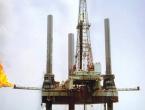EUR/USD
1.16744
0.428%
Gold
4205.79
0.002%
Oil
58.766
0.560%
USD/JPY
155.102
-0.489%
GBP/USD
1.33490
1.036%
GBP/JPY
207.050
0.559%
On December 4th, local time, on the 3rd, under the mediation of an Omani delegation, the Houthi rebels in Yemen released the 10 crew members of the cargo ship ETERNITYC, which they had previously detained. The ship was sunk by the Houthis in July for violating a Houthi navigation ban, and some of the crew members were rescued and have been held captive by the Houthis ever since.Hang Seng Index futures closed up 0.34% at 25,829 points in overnight trading, a premium of 68 points.Spains Economy Minister stated that Spain will only utilize approximately 25% of the available loans from the EU recovery fund. Spain has not yet felt any significant impact from US tariffs at the macro level. Spain is confident that a trade agreement between the EU and Mercosur can be signed before the end of the year.White House official: The U.S. and Russia held in-depth and productive talks.The Central Bank of Peru said it bought $51 million in the spot market.











